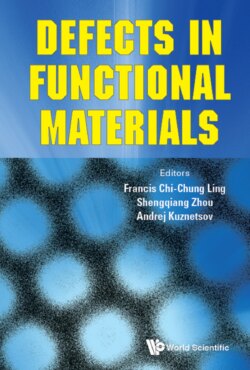Читать книгу Defects in Functional Materials - Группа авторов - Страница 19
2.2. Principles of STM and STS
ОглавлениеSTM/STS is a common atom probe used in electronic state imaging and analysis in surface science, based on the quantum tunneling effect between the sample surface and the STM tip. It is particularly suited for studying the defects in surfaces due to its high spatial resolution as well as the fact that electronic states introduced by defects will contribute to the tunneling current and thus be revealed by the difference in STM contrast between defects and the surrounding defect-free region. More importantly, by performing scanning tunneling spectroscopy measurements, one can derive the local density of states (LDOS) by taking the differential conductance spectra at the defects and its localization, thus providing direct evaluations of the electronic properties of the defects. Instead of repeating on the working principles of STM/S here, readers are referred to a few excellent monographs or book chapters on this celebrated technique [‘Methods of Experimental Physics, Vol. 27, Scanning tunneling microscopy’ Joseph A. Stroscio & William J. Kasiser (eds.), Academic Press 1993; ‘Introduction to Scanning Tunneling Microscopy (2nd ed.)’ C. Julian Chen, Oxford University Press 2008; ‘Scanning Probe Microscopy, Atomic Force Microscopy and Scanning Tunneling Microscopy’, Bert Voigtlaender, Springer 2015; ‘Scanning Probe Microscopy, Analytical Methods’ Roland Wiesendanger (ed.), Springer 1998; ‘Scanning Tunneling Microscopy and Its Application’ Chunli Bai, Springer 2000].
